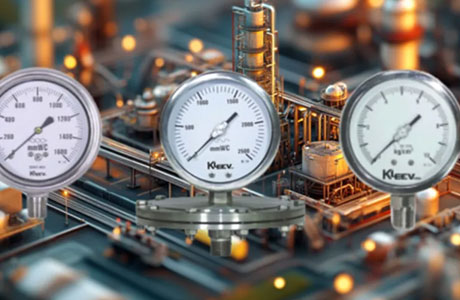What Is A High-Pressure Gauge, And Where Is It Used?
Key Takeaway
A high-pressure gauge measures extremely high pressures, typically above 1,000 psi. It is used in applications like hydraulic systems, high-pressure pumps, and gas cylinders.
These gauges are built to withstand harsh environments and provide accurate readings in demanding industrial operations. They are vital for safety and performance monitoring.
Introduction to High-Pressure Gauges
The introduction to high-pressure gauges highlights their critical role in industries requiring precise pressure monitoring under extreme conditions. High-pressure gauges are essential for applications like hydraulic systems, petrochemical processing, and aerospace engineering, where they measure pressures that exceed standard gauge capabilities.
These specialized gauges must withstand harsh environments and deliver reliable readings to ensure safe and efficient operations. Understanding the features and specifications of high-pressure gauges helps professionals select the right instruments for their specific needs, optimizing performance and safety. As technology advances, high-pressure gauges continue to evolve, offering enhanced accuracy and durability to meet the growing demands of modern industries.

Key Features and Construction
High-pressure gauges are typically made with high-strength materials, such as stainless steel, to withstand the intense forces exerted at higher pressures. Their construction includes:
Bourdon tube mechanism: The most common type for high-pressure gauges, the Bourdon tube bends when exposed to high pressure, which is then converted into a readable dial or digital output.
Precision dial: The gauge face includes fine markings for accurate readings at high pressures.
Safety design: Many high-pressure gauges come with features like blow-out protection or over-range indicators to ensure safe operation and prevent failure due to excess pressure.
Durable seals: High-pressure gauges often have seals that can resist corrosion, leaks, and pressure changes that could affect performance.
Applications in High-Pressure Environments
High-pressure gauges are vital in industries that deal with systems operating under high pressure, including:
Oil and Gas: These gauges are used to monitor pressures in pipelines, storage tanks, and drilling equipment, ensuring safe and efficient operation in exploration, extraction, and transportation.
Chemical and Petrochemical: High-pressure gauges help monitor reactors, pipelines, and storage systems where chemicals are processed under high pressure, ensuring that systems remain within safe operating conditions.
Power Generation: In power plants, high-pressure steam and gas systems need continuous pressure monitoring to prevent damage to equipment, reduce risks, and improve efficiency.
Hydraulic and Pneumatic Systems: High-pressure gauges are essential in hydraulic machinery and pneumatic systems to monitor and control fluid pressure within high-pressure applications, such as in manufacturing processes or heavy machinery.
Aerospace and Defense: These gauges are also used in aerospace for testing and maintaining aircraft systems, ensuring safety in flight and handling high-pressure systems like fuel or hydraulic systems.
Safety Considerations for High-Pressure Gauges
Given the high-risk nature of measuring extreme pressures, safety is a primary concern when using high-pressure gauges. Key safety features include:
Blow-out protection: Some gauges come with a built-in blow-out back feature to prevent hazardous fluid or gas release in case of gauge failure.
Over-pressure safety: Many high-pressure gauges have mechanisms that allow them to handle short bursts of pressure beyond their rated limits without failure, thus protecting operators and systems.
Regular calibration and maintenance: To avoid errors due to mechanical wear or damage, regular calibration and maintenance of high-pressure gauges are critical. This ensures accurate readings and long-term reliability.
Proper installation and use: Correct installation of high-pressure gauges, including the use of appropriate fittings and careful placement, ensures both accurate readings and user safety.
Advances in High-Pressure Gauge Technology
Recent technological advancements in high-pressure gauges have made them more accurate, durable, and safer than ever. Key developments include:
Digital gauges: Digital high-pressure gauges offer precise readings with better visibility, higher accuracy, and additional features like data logging or remote monitoring for ease of use in complex systems.
Wireless capabilities: Some high-pressure gauges now offer wireless transmission of data, allowing operators to monitor pressure remotely and improve process control across large installations or hazardous environments.
Improved materials: The use of advanced materials, such as corrosion-resistant coatings or composites, has significantly improved the durability and lifespan of high-pressure gauges, making them suitable for a broader range of industries and environments.
Conclusion
In conclusion, high-pressure gauges are essential tools for measuring pressure in applications where the pressure levels exceed standard ranges. These gauges are designed to withstand extreme conditions and provide accurate readings in environments such as hydraulic systems, gas cylinders, and high-pressure testing facilities.
Their robust construction and precise measurement capabilities make them indispensable in industries like aerospace, petrochemicals, and heavy machinery. By employing high-pressure gauges, businesses can ensure the safe and efficient operation of their systems, prevent incidents caused by pressure fluctuations, and maintain compliance with safety regulations.

